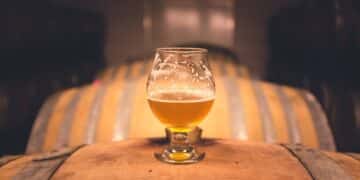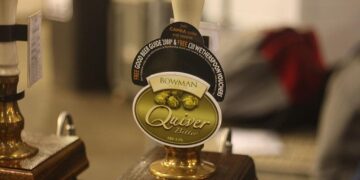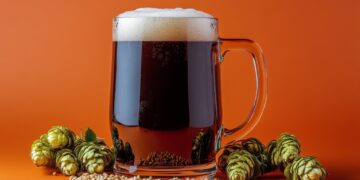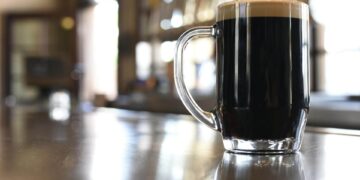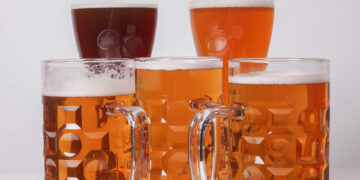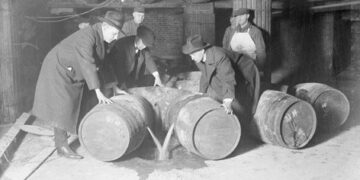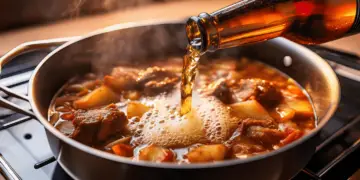Beer can be used as cooking ingredient in starters, main courses and desserts and, given the range of flavours available, could arm the budding house cook with a whole new repertoire of dishes.
Beer and Health
Far from popular belief, beer is not particularly high in fat, with one glass containing no more than is found in a glass of milk, or apple juice! Hops, malt, and herbs all blend together to provide a drink rich in vitamins and minerals. Whilst the excessive consumption of beer can undoubtedly have adverse health effects, due to its alcohol content, small amounts in food can actually contribute to a healthy diet.
Tips for Beer Recipes
Beer can be used much like wine in Coq’Au Vin, and it is unsurprising that in countries such as Belgium, where beer is widely produced as part of the national heritage, meats stewed in beer are very common. Carbonnade á la Flamande contains beer, onions, brown sugar, bacon and/or beef. For the experienced and confident cook that’s about as much information as you’ll need to get started experimenting, before you go for it though, consider the following alternative ideas:
Beer Bread
- Beer Fritters: Beer batter goes surprisingly well with apple or banana fritters.
- Beer Marinade: Marinate Chicken overnight in a light beer, garlic and lime before cooking as normal. Similarly, beef can be marinated in porter or stout.
- Beer Muffins: The fruity and sharp tastes of some beers can compliment the sweetness of fruit muffins, whilst the ‘maltiness’ offsets the ‘tart’ flavour of raspberries and blueberries.
- Beer Pancakes: Simply add beer to the batter in as small quantities to add a malty and distinctive flavour to pancakes. Try ‘kriek’ (lambic fruit) beers for an interesting variation.
- Beer Pies: Beer is commonly used in steak pies, and can also be used as a pastry glaze.
- Christmas Pudding: One variation of ‘Christmas Pudding’ includes the addition of stout, which goes favourably with such a rich and heavy dish.
- Steaming vegetables and Seafood: Steaming vegetable and seafood over beer is an effective way of maintaining all their nutrients, whilst adding flavour.
Which Beer To Use?
Generally it is best to go for a light beer, such as a light ale or bitter when cooking. The key is to compliment the other ingredients, rather than drowning them, so unless you are cooking with heavy meats such as beef or liver, dark ales, porters and stouts are best avoided.
The increasing availability of a wide variation of continental beers provides the opportunity for experimentation, and it is well worth considering the pairing of regional and national beers with their natural accompaniments. For example – British Beef with British ale, or French cheese baked in pastry parcels with an appropriate regional beer as a pastry ingredient. This offers the opportunity to not only promote the development of small scale regional brewing, but also to come to a closer understanding of regional fare, whilst promoting small scale farming too.






